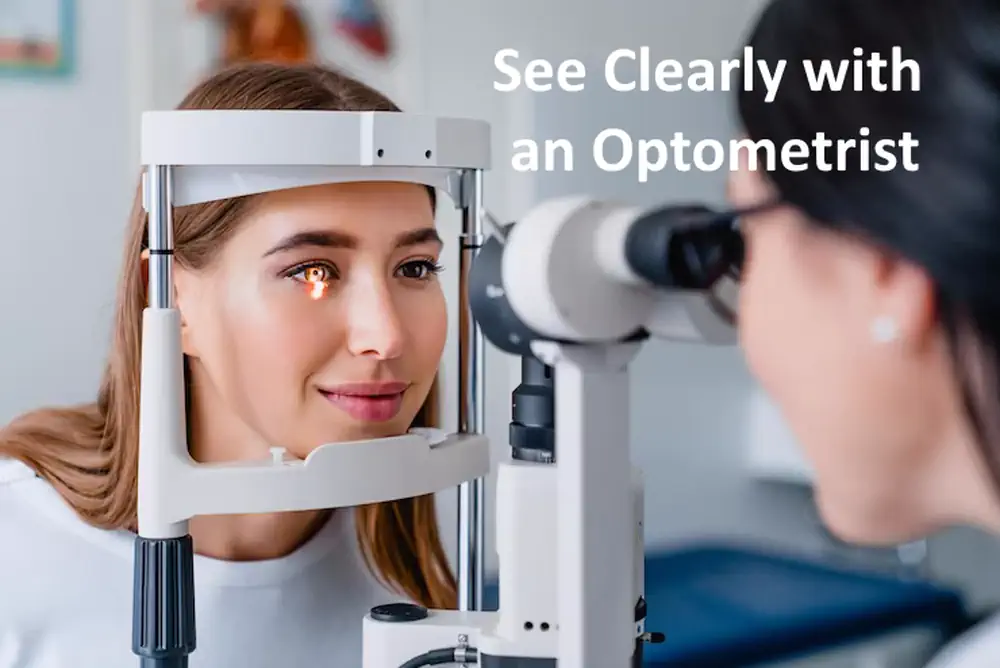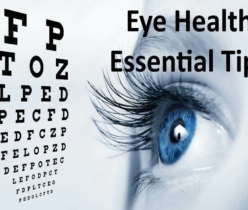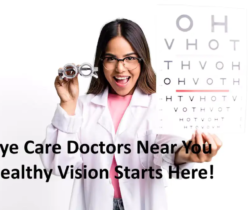
Seeing is essential for a good quality of life, and an optometrist plays a crucial role in ensuring that our eyes are healthy and functioning correctly. From diagnosing visual acuity to addressing complex refractive errors, optometrists provide comprehensive eye care services that cater to various needs. This article delves into the different aspects of eye care provided by optometrists and offers insights into maintaining optimal eye health.
Key Takeaways
- Visual acuity is measured using an eye chart to determine if corrective lenses are needed.
- Optometrists diagnose and treat refractive errors such as nearsightedness, farsightedness, and astigmatism.
- Eye alignment and movement are examined to detect conditions like strabismus and amblyopia.
- Comprehensive eye exams include both external and internal assessments to detect diseases such as cataracts and glaucoma.
- Regular eye checkups with an optometrist are vital for maintaining good eye health and overall quality of life.
Understanding Visual Acuity

How Visual Acuity is Measured
Visual acuity is the measurement of your ability to see clearly at different distances. The optometrist will assess your visual acuity using an eye chart to determine if you need corrective lenses. Visual acuity assessment is a crucial aspect of ophthalmic examination.
Importance of Visual Acuity in Daily Life
The loss of visual acuity can significantly impact an individual’s quality of life. Clear vision is essential for daily activities such as reading, driving, and recognizing faces. Regular eye exams help in maintaining optimal visual acuity.
Common Visual Acuity Problems
Common visual acuity problems include refractive errors such as nearsightedness, farsightedness, and astigmatism. These conditions occur when the shape of the eye prevents light from focusing directly on the retina, resulting in blurred vision. Identifying these issues early can lead to effective treatment and improved quality of life.
Identifying and Correcting Refractive Errors

Types of Refractive Errors
Refractive errors occur when the shape of the eye prevents light from focusing directly on the retina, resulting in blurred vision. The four main types of refractive errors are:
- Nearsightedness (Myopia): Difficulty seeing distant objects.
- Farsightedness (Hyperopia): Difficulty seeing close objects.
- Astigmatism: Distorted or blurred vision at any distance due to an irregularly shaped cornea or lens.
- Presbyopia: Age-related difficulty in seeing close objects due to the hardening of the lens.
Symptoms of Refractive Errors
Common symptoms of refractive errors include:
- Blurred vision
- Headaches
- Eye strain
- Double vision
- Difficulty seeing at night
If you experience any of these symptoms, it is important to consult an optometrist for a comprehensive eye examination.
Treatment Options for Refractive Errors
There are several treatment options available for correcting refractive errors:
- Eyeglasses: The most common and simplest method to correct refractive errors.
- Contact lenses: Provide a wider field of vision and are a good alternative to eyeglasses.
- Refractive surgery: Procedures like LASIK can permanently correct refractive errors by reshaping the cornea.
Bold: Eyeglasses are the most common and simplest method to correct refractive errors. Italics: Contact lenses provide a wider field of vision and are a good alternative to eyeglasses.
Regular eye checkups are essential to detect and correct refractive errors early, ensuring optimal eye health and clear vision.
The Role of Eye Alignment and Movement

What is Eye Alignment?
Eye alignment refers to how well your eyes work together to focus on an object. Proper alignment ensures that both eyes are directed at the same point, allowing for clear and single vision. Misalignments, such as phorias and tropias, can lead to issues like double vision or eye strain. Eye alignment problems are usually caused by the inability of the eyes to work together effectively.
Common Eye Movement Disorders
Common disorders related to eye movement include strabismus (crossed eyes) and amblyopia (lazy eye). These conditions can affect depth perception and overall visual acuity. Strabismus occurs when the eyes do not align properly, while amblyopia results from poor vision in one eye due to lack of use. Both conditions require early detection and treatment to prevent long-term vision problems.
Treatment for Eye Alignment Issues
Treatment options for eye alignment issues vary depending on the severity and type of misalignment. They may include:
- Prescription glasses or contact lenses
- Vision therapy exercises
- Surgical intervention in severe cases
Optometrists play a crucial role in diagnosing and managing these conditions to ensure optimal eye health and function.
Comprehensive Eye Health Examinations

External Eye Health Checks
During an external eye health check, the optometrist examines the outer structures of the eye, including the eyelids, cornea, and conjunctiva. This part of the exam helps in identifying any visible abnormalities or infections. Regular external checks are crucial for maintaining overall eye health and catching issues early.
Internal Eye Health Assessments
Internal eye health assessments involve a detailed examination of the inner eye structures such as the retina, optic nerve, and blood vessels. These assessments can detect conditions like glaucoma, diabetic retinopathy, and macular degeneration. The use of advanced diagnostic tools, like the slit-lamp exam, enhances the accuracy of these assessments.
Detecting Eye Diseases Early
Early detection of eye diseases is vital for effective treatment and management. Comprehensive eye exams can reveal early signs of conditions that might not yet show symptoms. This proactive approach helps in preventing severe vision loss and maintaining long-term eye health.
Regular eye exams are essential for detecting eye diseases early and ensuring timely treatment.
- Visual acuity test
- Visual refraction eye test
- Visual field test
- Slit-lamp exam
- Air-puff test (non-contact tonometry)
Choosing the Right Eye Care Specialist

Optometrist vs. Optician
When it comes to eye care, understanding the difference between an Optometrist and an optician is crucial. Optometrists are eye doctors who diagnose and treat issues that affect your eyes. They can also prescribe glasses and contact lenses. On the other hand, opticians help you choose the right glasses, contacts, or other corrective lenses after your eye doctor gives you a prescription.
When to See an Ophthalmologist
Ophthalmologists are medical doctors who specialize in eye and vision care. They are trained to perform eye exams, diagnose and treat disease, prescribe medications, and perform eye surgery. You should see an ophthalmologist if you have complex eye issues or conditions that may require surgery, such as glaucoma or cataracts.
How to Choose Your Eye Care Provider
There are so many types of vision specialists. Finding the right one can be overwhelming, so how do you choose the right eye doctor for you? Consider the following steps:
- Identify your needs: Routine checkup, vision correction, or treatment for a specific condition.
- Check credentials: Ensure the specialist is certified and has good reviews.
- Ask for recommendations: Consult friends, family, or your primary care doctor.
- Evaluate convenience: Consider the location and availability of the specialist.
Regular visits to your eye care specialist are essential for maintaining good eye health and catching any issues early on.
The Importance of Regular Eye Checkups

Frequency of Eye Exams
Regular appointments with an optometrist can help ensure good eye health. If there is an issue, whether with vision or the eye’s overall health, they will provide solutions or management techniques that also improve quality of life. Therefore, the importance of these checkups is not to be overlooked—and they typically take less than an hour.
Benefits of Regular Eye Checkups
Just like going to the dentist every year helps prevent tooth decay and wards off other dental issues, having regular comprehensive eye exams helps preserve your eye health and prevent any visual problems. Comprehensive eye exams are important at every stage of life. Children need to have annual eye exams to identify and address any potential eye conditions, such as nearsightedness, that can impede their success inside and outside the classroom.
What to Expect During an Eye Exam
The main reason to visit an eye doctor at least once a year is so that patients can maintain eye health. While there is not a lot that goes into maintaining good eye health, it is primarily up to the eye doctor to check on the eyes’ condition. Most patients are not equipped to care for their own eyes without the help of a professional.
Vision screenings are extremely important, as a lot of people do not realize when their vision changes. Even if the change is slight, detecting it can be crucial.
Advanced Diagnostic Tools in Optometry

Modern Equipment Used
Optometrists today utilize a range of cutting-edge diagnostic eye equipment to ensure precise detection and management of eye conditions. Some of the most commonly used tools include Optical Coherence Tomography (OCT), digital retinal imaging, and visual field testing. These tools help in providing a comprehensive view of the eye’s health, allowing for early detection of potential issues.
Accuracy of Diagnostic Tools
The accuracy of these advanced diagnostic tools is paramount. Embrace clarity with San Ramon Family Optometry’s advanced diagnostic equipment. The precision offered by these tools ensures that even the smallest anomalies are detected, leading to better treatment outcomes. For instance, OCT can provide detailed images of the retina, helping in the diagnosis of conditions like macular degeneration and glaucoma.
Benefits of Advanced Diagnostics
The benefits of using advanced diagnostic tools in optometry are numerous. They not only enhance the accuracy of diagnoses but also improve patient outcomes. Patients can expect:
- Early detection of eye diseases
- More accurate prescriptions
- Better management of chronic eye conditions
Regular use of these tools in eye exams can significantly improve the quality of eye care, ensuring that patients maintain optimal vision health.
In conclusion, the integration of modern diagnostic tools in optometry practices is essential for providing high-quality eye care. These tools enable optometrists to detect and treat eye conditions more effectively, ensuring that patients can see clearly and maintain their eye health for years to come.
Conclusion
Regular visits to an optometrist are essential for maintaining optimal eye health and clear vision. Whether it’s assessing visual acuity, checking for refractive errors, or examining eye alignment and overall eye health, an optometrist plays a crucial role in diagnosing and managing eye conditions. By prioritizing regular eye checkups, you can ensure that any potential issues are detected early and managed effectively, contributing to a better quality of life. Don’t overlook the importance of eye care—schedule your appointment with an optometrist today and see the world more clearly.
Frequently Asked Questions
What is visual acuity?
Visual acuity is the measurement of your ability to see clearly at different distances. Optometrists assess visual acuity using an eye chart to determine if you need corrective lenses.
What are refractive errors?
Refractive errors, such as nearsightedness, farsightedness, and astigmatism, occur when the shape of the eye prevents light from focusing directly on the retina, resulting in blurred vision.
How often should I get my eyes checked?
The frequency of eye exams depends on various factors including age, health, and whether you wear glasses or contact lenses. People with diabetes or other health conditions may need more frequent checkups.
What is the difference between an optometrist and an optician?
Optometrists diagnose and treat eye issues and conduct regular eye exams. Opticians work with optometrists and ophthalmologists to fit you for glasses and contact lenses but do not diagnose or treat eye conditions.
What should I expect during an eye exam?
During an eye exam, the optometrist will assess your visual acuity, check for refractive errors, examine eye alignment and movement, and evaluate the overall health of your eyes.
When should I see an ophthalmologist?
You should see an ophthalmologist for eye surgeries or if you need specialized care for serious eye conditions. They can also provide regular eye care, including exams and prescriptions for glasses or contacts.
Meta Description
Learn about visual acuity, refractive errors, eye alignment, and the importance of regular eye checkups.




